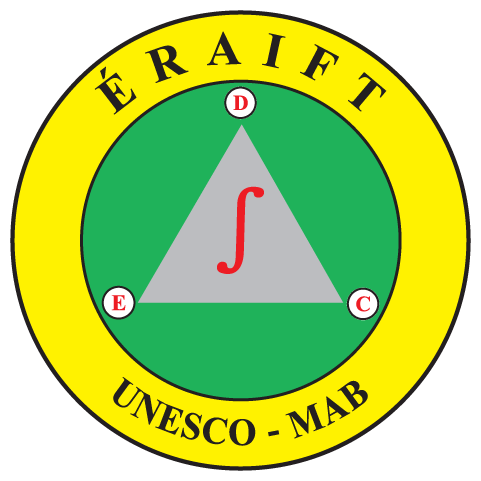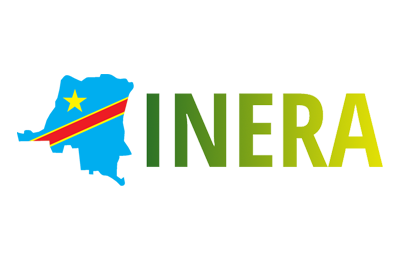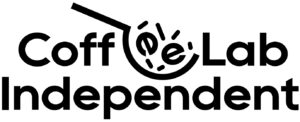Our Research
State of the Art
In contrast to Arabica, the research and development activities on Robusta coffee is limited. Moreover, studies are usually performed in a limited number of countries, such as Brazil, Vietnam, Indonesia, Uganda and India. Research and development on Robusta is impeded by the restricted number of studies on the (wild) genetic diversity and limited access to genetic resources. By doing research in the DRC, a country of origin of coffee, with important genetic diversity of wild Coffea canephora and a big potential for coffee cultivation, we contribute to local and international needs.
An in depth socio-economic study will be performed to ensure that all socio-economic, cultural historic and governmental considerations are understood. This will ascertain whether or not local populations can be encouraged to adopt coffee cultivation in their livelihood strategies. This will be done by carrying out an in-depth qualitative sociological analysis, assessing the perception of potential beneficiaries on coffee cultivation. Next, we will determine how investment in coffee would impact other livelihood activities and what implications this would have for the environment. Then, the institutional interactions and social advantages and disadvantages will be analyzed to assess the governance framework in which the potential coffee production would take place, and lastly behavior changes will be documented over time.
Tasks:
- Inventory of the current coffee cultivation practices
- Assessment of the land ownership, territorial control and land appropriation in the Tshopo region
- Current economic activities and interaction with markets
- Relations between farmers and state institutions
- Age and gender in coffee growing and related activities
- Investment and income in coffee growing
The diversity of the coffee genetic resources kept in the collection of Yangambi will be described and characterized in various different ways.
We aim to genetically screen the current Robusta collection at Yangambi using modern molecular techniques and compare it to wild collected material and commercial grown Robusta. The genetic passport data and subsequent population genetic network generated will act as a framework for data obtained in the other WP’s and will allow to carry out trait analyses.
For the SSR analyses we use the microsatellite primers specifically designed by Poncet et al. (2007) and Hendre et al. (2008) to analyze Robusta populations that are amplified and subsequently genotyped. The fragment size-based SSR approach is complementary to the GBS technique that generates several Mbp of SNPs. A set of GBS-based SNPs is subsequently selected to generate a multiplex amplicon sequencing to obtain at least 500 SNPs included in short fragments of maximum 200bp to also cover highly degraded material such as herbarium samples (used as a historical reference). Using the assay approach allows us to genotype cheaply and time-efficiently, delivering high-throughput screening. General population genetic indices are calculated such as number of alleles per locus (Na), gene diversity, observed (Ho) and expected heterozygosity (He), gene diversity, and allelic richness (AR) using Genetix 4.0 and SPaGeDi 1.5. Population structure within the germplasm collection is investigated with a multivariate method that identifies and designates clusters of related individuals: DAPC (discriminant analysis of principal components). A Bayesian clustering algorithm as implemented in Structure 2.3, is used to estimate the number of genetic clusters. Both SSRs and GBS derived SNP data are examined using statistical methods. Obtained results from SNP and SSR data analysis are compared to obtain a reliable estimate of the genetic variation within the collection and compared to the wild accessions.
Tasks:
- Genetic screening of the Robusta collection, combining single sequence repeats (SSR) and genotyping by sequencing (GBS)
- Genetic analysis
The collection will also be analyzed phenotypically. Existing and newly introduced genetic lines will be characterized based on descriptors developed by the International Plant Genetic Resources Institute (IPGRI, 1996). Values for 34 qualitative and 20 quantitative descriptors are recorded for up to three plants per accession and analysed using UPGMA (unweighted pair group method with arithmetic mean) clustering and ordination techniques to differentiate phenotypic entities. These descriptors should enable easy and quick discrimination between phenotypes, but they also provide critical information for proper management of accessions.
- Optimization of the descriptor list for Robusta coffee and development of a database with descriptor information
- Completion of the descriptor list for all accessions currently in the collection and for newly collected wild coffee accessions
- Analysis and summarization of the descriptor list
In previous research, an untargeted and targeted metabolomics protocol was developed on leaves of different Coffea species using original techniques. These techniques will now be used in the CoffeeBridge project to perform an untargeted metabolomics study on the green and roasted Robusta beans and on the leaves.
The metabolomics study uses liquid chromatography coupled to high resolution mass spectrometry (LC-HRMS, QTOF), a powerful analytic tool allowing identification of metabolite pathways following robust experimental conditions. In untargeted metabolomics, we investigate without a priori known compounds that are present and make the data analysis a key point.
This tool allows supervised and unsupervised statistical analyses after data pre-processing (alignment, normalization…) on a Galaxy server. The in silico platform allows to identify determinants for the clustering of samples provided by different experimental conditions. We use the W4M platform with success to compare the coffee leaf metabolome. In mass spectrometry, determinants are characterized by retention time, mass/charge ratio and abundance.
Tasks:
- Sample preparation and analysis using liquid chromatography coupled to high resolution mass spectrometry
- Data processing for metabolomics, statistical analysis (chemometrics)
To identify the potential and differences of the genetic lines used, the coffee beans are picked and dried in an standardized way. The sampling will be done in such a way that it will be possible to compare the results with the genetic, phenotypic and chemical characteristics of the genetic lines as well as with the agronomic and soil characteristics of the sourced plants. At least two different seasons are assessed in order to have a more nuanced evaluation of bean quality. After collecting, the sample is optically/physically assessed on site (defect counting & screening) to check if striking differences are seen (e.g. quantify the insect damage, green seeds/black seeds). Afterwards, good quality and defect beans are separated from each other; the coffee is bagged and coded according to a pre-established procedure. This part of the work is done by local partners. The good quality beans are sent to a test panel; the different samples are assessed (blind tasting tests) by a team of experts with expertise in the evaluation of Robusta coffee and compared to commercial reference samples of graded quality Robusta. Results are summarized in a report and the commercial potential of different genetic lines is evaluated, since organoleptic characteristics are very important to assess the market price and its position on the world wide coffee market.
Tasks:
- Preparation and processing of the coffee samples
- Evaluation ‘workshops’, where different samples will be assessed by a team of Robusta experts using blind tasting tests. The samples will be compared to commercial reference samples of graded quality Robusta.
- Report summarizing task 1 & 2 and the commercial potential of the different genetic lines.
The current coffee- crop- shade tree systems will be evaluated from an agro-ecological point of view and the soil fertility will be assessed. A survey is executed to characterize and assess the current coffee systems under forest, home gardens and old plantations. About 100 plots with a variable surface area will be used to inventory coffee, non timber forest products (NFTP’s) and surrounding shade trees, determine the species and measure a.o. tree diameter, height, canopy closure, … The coffee genotype will be assessed in concertation with the genetic researchers. The local use and preference of the inventoried shade trees and NTFP’s are assessed through interviews at household levels and at the plot sites. These activities are carried out in close collaboration with socio-economic researchers.
A soil analysis will be carried out at the above mentioned 100 plots and leaf samples will be collected from 500 coffee trees. Coffee leaves are sampled in a systematic way and a picture is taken from each sampled leaf. The leaf samples are assessed for most macro- and micro- nutrients by ICP-MS and for C and N by dry combustion in a CN analyser (n= 500).
There will be an on-station trial managed to assess the impact of differences in shade, shade tree species, coffee variety and fertilization on coffee productivity. Density, growth and productivity is assessed on a yearly basis.
Tasks:
- Assess and inventory the shading trees and NTFP’s that surround the available coffee trees.
- A typology will be developed for the different farming systems that have coffee as a component.
- Soil fertility and impact on coffee health and productivity.
- An on-station trial will be established to assess the impact of the most promising shade tree species on the most promising Robusta lines
The successful introduction of Robusta coffee in the early 20th century as an alternative crop for Arabica coffee, plagued by the coffee rust, can be seen as an important milestone in the adaptation of coffee cultivation to a quickly emerging and devastating pest. Although it is widely accepted that Lucien Linden had an important role in the introduction of Robusta coffee and that he sourced it from the Congo, this history is not elucidated and many questions remain unanswered, e.g. how this exploration and introduction was organized, what is the exact origin of the cultivated genetic resources, which networks connected researchers traders in Belgian Congo and other colonial territories in Africa and Asia, etc. A better insight in the introduction and diffusion history of Robusta Coffee and relevant international scientific networks, can help to answer actual questions in the context of in-situ and ex-situ conservation and for breeding towards a more climate resilient coffee cultivation, as the actual culture of coffee is based on a very restricted genetic base mainly from the Congo Basin.
Tasks:
- Historical research: prospecting archival sources
- Digitizing and making documents available online
- Study of the collected information: compiling the information on the introduction, diffusion and further scientific valorization of Robusta coffee in Belgian Congo and other colonies in Africa and Asia (1880-1960)











